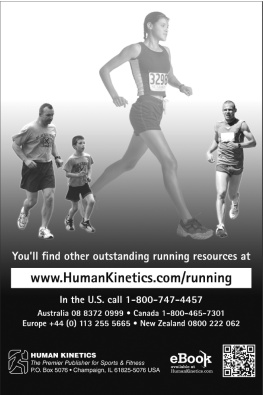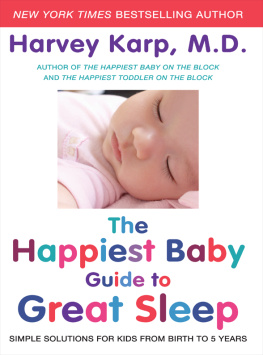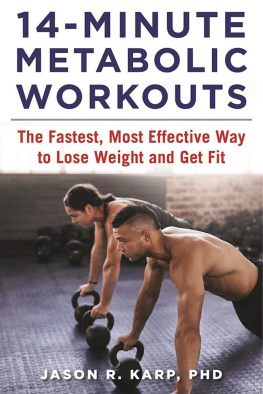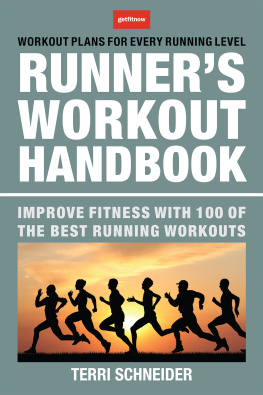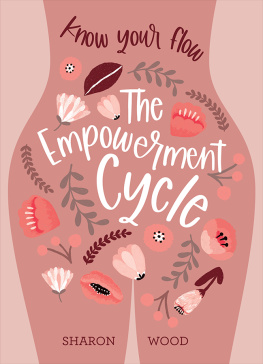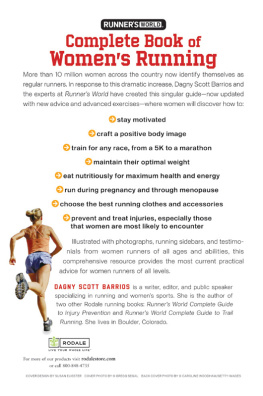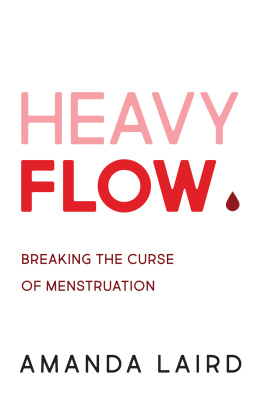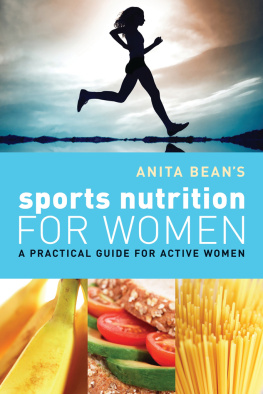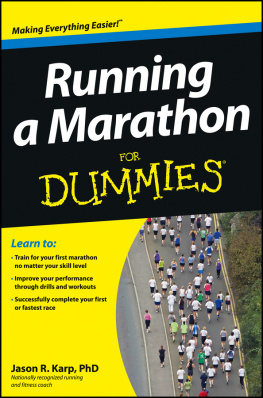Karp - Running for Women
Here you can read online Karp - Running for Women full text of the book (entire story) in english for free. Download pdf and epub, get meaning, cover and reviews about this ebook. publisher: Human Kinetics, genre: Romance novel. Description of the work, (preface) as well as reviews are available. Best literature library LitArk.com created for fans of good reading and offers a wide selection of genres:
Romance novel
Science fiction
Adventure
Detective
Science
History
Home and family
Prose
Art
Politics
Computer
Non-fiction
Religion
Business
Children
Humor
Choose a favorite category and find really read worthwhile books. Enjoy immersion in the world of imagination, feel the emotions of the characters or learn something new for yourself, make an fascinating discovery.
- Book:Running for Women
- Author:
- Publisher:Human Kinetics
- Genre:
- Rating:3 / 5
- Favourites:Add to favourites
- Your mark:
- 60
- 1
- 2
- 3
- 4
- 5
Running for Women: summary, description and annotation
We offer to read an annotation, description, summary or preface (depends on what the author of the book "Running for Women" wrote himself). If you haven't found the necessary information about the book — write in the comments, we will try to find it.
Running for Women — read online for free the complete book (whole text) full work
Below is the text of the book, divided by pages. System saving the place of the last page read, allows you to conveniently read the book "Running for Women" online for free, without having to search again every time where you left off. Put a bookmark, and you can go to the page where you finished reading at any time.
Font size:
Interval:
Bookmark:


Library of Congress Cataloging-in-Publication Data
Karp, Jason.
Running for women / Jason R. Karp, Carolyn S. Smith.
p. cm.
Includes index.
ISBN-13: 978-1-4504-0467-9 (soft cover)
ISBN-10: 1-4504-0467-7 (soft cover)
1. Running for women. I. Smith, Carolyn S., 1965- II. Title.
GV1061.18.W66K37 2012
796.42082--dc23
2012003780
ISBN-10: 1-4504-0467-7 (print)
ISBN-13: 978-1-4504-0467-9 (print)
Copyright 2012 by Jason R. Karp and Carolyn S. Smith
All rights reserved. Except for use in a review, the reproduction or utilization of this work in any form or by any electronic, mechanical, or other means, now known or hereafter invented, including xerography, photocopying, and recording, and in any information storage and retrieval system, is forbidden without the written permission of the publisher.
This publication is written and published to provide accurate and authoritative information relevant to the subject matter presented. It is published and sold with the understanding that the author and publisher are not engaged in rendering legal, medical, or other professional services by reason of their authorship or publication of this work. If medical or other expert assistance is required, the services of a competent professional person should be sought.
Acquisitions Editor: Tom Heine; Developmental Editor: Heather Healy; Assistant Editor: Claire Marty; Copyeditor: Annette Pierce; Indexer: Nan N. Badgett; Permissions Manager: Martha Gullo; Graphic Designer: Nancy Rasmus; Graphic Artist: Julie L. Denzer; Cover Designer: Keith Blomberg; Photographer (cover): Corey Rich/Aurora Photos/age fotostock; Photographer (interior): Neil Bernstein, Human Kinetics, unless otherwise noted; Photo Asset Manager: Laura Fitch; Visual Production Assistant: Joyce Brumfield; Photo Production Manager: Jason Allen; Art Manager: Kelly Hendren; Associate Art Manager: Alan L. Wilborn; Illustrations: Human Kinetics, unless otherwise noted; Printer: United Graphics
We thank The High School of St. Thomas More in Champaign, Illinois, for assistance in providing the location for the bleacher hop photo for this book.
Human Kinetics books are available at special discounts for bulk purchase. Special editions or book excerpts can also be created to specification. For details, contact the Special Sales Manager at Human Kinetics.
Printed in the United States of America 10 9 8 7 6 5 4 3 2 1
The paper in this book is certified under a sustainable forestry program.
Human Kinetics
Website: www.HumanKinetics.com
United States: Human Kinetics
P.O. Box 5076
Champaign, IL 61825-5076
800-747-4457
e-mail:
Canada: Human Kinetics
475 Devonshire Road Unit 100
Windsor, ON N8Y 2L5
800-465-7301 (in Canada only)
e-mail:
Europe: Human Kinetics
107 Bradford Road
Stanningley
Leeds LS28 6AT, United Kingdom
+44 (0) 113 255 5665
e-mail:
Australia: Human Kinetics
57A Price Avenue
Lower Mitcham, South Australia 5062
08 8372 0999
e-mail:
New Zealand: Human Kinetics
P.O. Box 80
Torrens Park, South Australia 5062
0800 222 062
e-mail:
E5327
For my father, Monroe, whose long walking strides caused me to run to keep up. And for my mother, Muriel, a great athlete herself. In her memory, I will personally donate 10 percent of my royalties on every book sold to Susan G. Komen for the Cure.
- Jason Karp
In memory of my grandmother, Gertrude Gallagher Smith, the remarkable matriarch of our family who was ahead of her time and a pillar of strength and inspiration to me and women everywhere. And to my first track and cross country coaches, Ben Newson and Dick Greene, who recognized and nurtured my talent and instilled a love for the sport, for which I am forever grateful.
- Carolyn Smith
As best-selling author John Gray so decisively pointed out, men and women seem to be from different planets. In addition to the many psychological and behavioral differences, it is evident from the time we are boys and girls that there are also many anatomical, physiological, hormonal, and metabolic differences between males and females. Many of these differences influence girls and womens response to running, which raises the question: should women train differently than men?
The past few decades have seen a significant rise in the number of physically active women and the number of women competing in running races. Females now account for more than 5.4 million road race finishers nationwide and represent 53 percent of race fields compared to only 23 percent in 1989. Women now exceed the number of male participants in every race distance except the marathon. The half-marathon currently has the largest female percentage (57 percent) of any U.S. road distance, with the percent flipping to a female majority in 2005. By contrast, in 1985, less than 20 percent of half-marathon finishers were female. Of the nearly 468,000 runners who completed a marathon in the United States in 2009, 40.4 percent of them were female.
As a result of the womens running boom, womens running performances have improved at a much faster rate than those of men, who have been running competitively for a long time. Over the first 40 years of womens official competition in the marathon (1971-2011), the world record improved by 46 minutes and 17 seconds (25.5 percent). In comparison, over the first 40 years of mens official competition in the marathon (1908-1948), the world record improved by 29 minutes and 39 seconds (16.9 percent). At the other end of the distance-running spectrum, women have decreased their time in the mile (1,600 meters) from 6:13 in 1921 to the current world record of 4:12.56, an improvement of 32.3 percent, while men have decreased their time in the mile from 4:28 in 1852 to the current world record of 3:43.13, an improvement of 16.7 percent. Interestingly, women are slightly closer to their male counterparts in the marathon (9.5 percent) than in the mile (13.2 percent), differences that have remained pretty stable since the 1980s.
In response to the popularity of running among women, a great deal of scientific research has been undertaken to understand what characteristics influence the difference in running performance between the sexes, a difference that averages 10.7 percent in favor of men across all running distances, from the 100 meters to the marathon. The research starts with the heart. During puberty, mens hearts grow larger than those of women, creating a larger, more powerful pump. Men also have more oxygen-carrying hemoglobin in their blood, owing to their greater blood volume. Together, the larger heart and greater blood volume create a cardiovascular system that supplies a greater amount of oxygen to the working muscles, giving men a higher aerobic ceiling (expressed physiologically as the maximum volume of oxygen consumed per minute, or  O2max). As a result, men are able to sustain a faster running pace. This cardiovascular advantage for men explains why the best female runners dont run as fast as the best male runners in distance races up to the marathon.
O2max). As a result, men are able to sustain a faster running pace. This cardiovascular advantage for men explains why the best female runners dont run as fast as the best male runners in distance races up to the marathon.
In ultramarathons, however, during which the race is run at a slower pace, a narrowing of race performances between the sexes occurs. Cardiovascular differences become less important, and other characteristics, such as fuel use by the muscles and the ability to dissipate heat, become more important. Ultramarathons may represent a unique opportunity for women to excel; scientific research has revealed that women have a greater capacity than men to metabolize fat and conserve their limited store of carbohydrate (glycogen), which may give them an advantage for very long endurance activities. Although men run significantly faster than women at race distances from the 5K to the marathon, they do not run significantly faster in races longer than a marathon and sometimes dont run faster at all. For example, while the womens 5K and marathon world records are 12.4 and 9.5 percent slower than the mens 5K and marathon world records, the womens 100K world record is only 5.3 percent slower than the mens world record. It seems possible that elite women could beat elite men in ultramarathons. Research is revealing that women ultramarathon runners seem to have a greater resistance to fatigue than do equally trained men whose performances are superior up to the marathon distance.
Next pageFont size:
Interval:
Bookmark:
Similar books «Running for Women»
Look at similar books to Running for Women. We have selected literature similar in name and meaning in the hope of providing readers with more options to find new, interesting, not yet read works.
Discussion, reviews of the book Running for Women and just readers' own opinions. Leave your comments, write what you think about the work, its meaning or the main characters. Specify what exactly you liked and what you didn't like, and why you think so.

